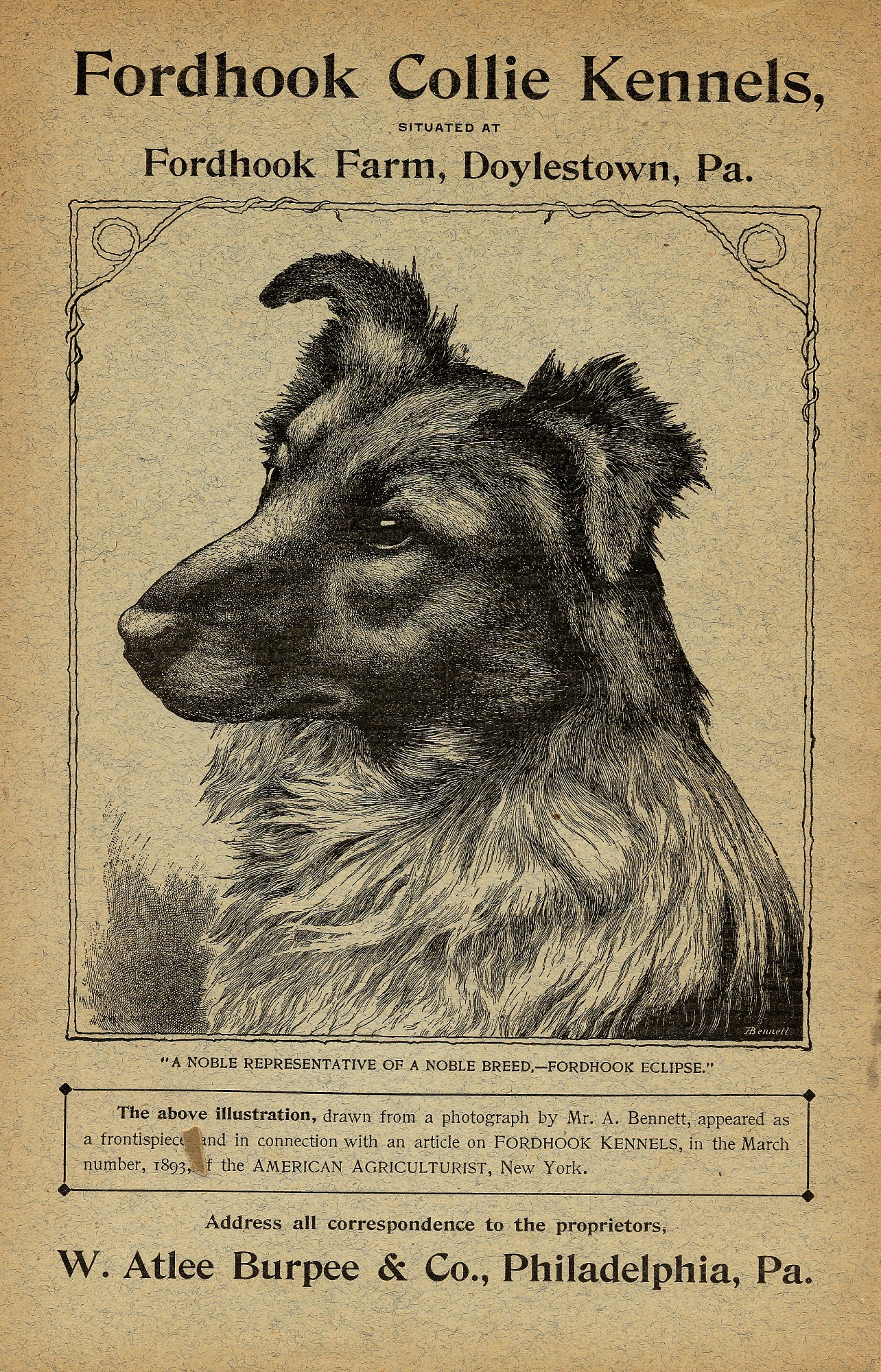Lab Notes
Short stories and links shared by the scientists in our community
Woolly mammoths may have roamed Canada 1,000 years longer than previously thought
A new method to extract DNA from sediment provides insight into the history of mammoths and horses
By Thomas Quine - https://www.flickr.com/photos/quinet/44598416660/, CC BY 2.0, https://commons.wikimedia.org/w/index.php?curid=80400437
By analyzing ancient DNA found in sediment, scientists can reconstruct past floras and explore long-standing historical questions, such as finding out where temperate trees survived during glacial stages. But despite the rapid progress in this field, scientists still face challenges when it comes to ancient DNA extraction, such as how to tackle inhibitors that may be present in the sediment and impede DNA sequencing.
Recently, a group of researchers in Canada developed a new cold spin inhibitor removal technique to extract ancient DNA from four permafrost samples from the Klondlike — a region in the Yukon territory in northwest Canada. This research was published in the Quaternary Research journal in September 2020.
Using this new technique, the researchers were able to overcome inhibitors present in sediment, allowing for a higher recovery of ancient DNA.
The researchers also identified several animals and plants in their four permafrost samples, from as little as 0.2 grams of sediment, leading them to conclude that the samples belonged to different time points in the Pleistocene-Halocene transition, which occurred approximately 11,000 years ago.
However, there were a few interesting anomalies.
The researchers found genetic evidence suggesting that the woolly mammoth (Mammuthus primigenius) and horse (Equus sp.) may have survived longer than expected in the Klondike region, almost a thousand years later than previously thought. This adds to the conflicting evidence present. For example, while previous radiocarbon dating indicates that horses disappeared from North America relatively early (i.e. ~13,000 years ago), a 2009 study published in PNAS found ancient DNA evidence to suggest that woolly mammoths and horses persisted in interior Alaska until at least 10,500 years ago.
While the mystery of the woolly mammoth and horse will need further investigation, this new study provides an alternative technique for scientists working with ancient DNA, rather than relying on the harsher treatments that destroy the very limited ancient DNA present in sediment.
After 57 years, the Arecibo Observatory's iconic telescope is shutting down
The US National Science Foundation is planning to dismantle the damaged telescope
Arecibo Observatory/UCF
Puerto Rico's Arecibo Observatory is home to one of the most powerful radio astronomy telescopes in the world. Scientists have used the observatory and telescope to make incredible discoveries, from the distribution of polar ice on Mercury (in 1994) to repeating fast radio bursts from outside our galaxy (2016). It's also a key part of science education in Puerto Rico, with more than 100,000 visitors each year.
But in August 2020, the 305-meter telescope started to have major structural issues. First, an auxiliary cable broke out of its socket, smashing into the large reflector.
Just as the observatory's team finalized testing and repair plans in early November, a main cable broke, further weakening the integrity of the structure. Now, the remaining cables, support towers, and platform are at risk of catastrophic collapse.
Today, the US National Science Foundation (NSF) announced that it plans to decommission the massive telescope. Decommissioning means that the telescope won't be repaired. Instead it will be carefully taken apart and permanently shut down.
NSF determined that it is too dangerous to attempt to repair the telescope itself because of the risk of collapse. They will, however, try to save the rest of the buildings and structures at the Arecibo Observatory, like the visitor center and LIDAR research facility.

Image courtesy of Arecibo Observatory/UCF
It's difficult to know how this loss will impact the future of radio astronomy. Prior to the damage, Arecibo was the most powerful and most sensitive planetary radar system on Earth. Astronomers used Arecibo to observe up to 130 Near-Earth Objects (comets and asteroids that are in our planet's neighborhood) each year.
Curious honey bees are more likely to have curious kids
Foraging honey bees search for new food sources as flowering plants emerge
Damien Tupinier on UnSplash
Humans are curious about the world. It's our curiosity that has led to life-saving inventions and Nobel Prize-winning discoveries about the world around us. But curiosity is not limited just to Homo sapiens — it also exists in the insects we know and love. When you think of honey bees, you probably think of giant swarms of bees, all working in tandem to raise offspring, bring back pollen and nectar, and serve their queen. But in order to survive, honey bees must be curious.
Foraging honey bees must act like tiny explorers, searching for new food sources as new flowering plants emerge. Bees, just like humans, can be extremely curious about the world around them. Some bees would rather stick to the flowers they already know. A recent study from researchers at Marquette University found that some bees are genetically predisposed to being more curious explorers, seeking out new food sources even when familiar food sources are present.
To understand how bee behavior differed between individual honey bees, the researchers separated genetically "curious" and "focused" bees and gave them access to two food sources: a familiar location, and a location with changing smells and colors. The bees were separated based on the behavior of their parents — if their parent was very adventurous and curious about the world around them, they were more likely to be curious, too. If the bee parents preferred to only visit the same places, eat the same foods, and keep to what they know, the offspring of those bees were likely to have the same preferences.
The researchers found that the bees that were genetically predisposed to being curious were more likely to visit the location with changing characteristics, and to perform more intense waggle dances to alert their fellow honey bees to these new foraging opportunities. The curiosity stemmed from the bees' genetic background, and is an important trait to a successful colony, especially in the face of climate change and shifting flowering landscapes.
Could the next coronavirus outbreak come from pigs?
A virus called SADS-CoV could also spillover to humans
Where will the next deadly virus originate? This is the question plaguing “virus hunters,” scientists searching for the animal viruses that may jump into humans to cause deadly illnesses. This transfer of viruses from animals to humans, known as “spillover”, has caused several outbreaks including the H1N1 (swine flu) pandemic of 2009 and the ongoing SARS-CoV-2 pandemic. A team of scientists led by Ralph Baric, known as ‘The Coronavirus Hunter’, may have just found the next threat, a virus known as swine acute diarrhea syndrome coronavirus, or SADS-CoV.
In 2016, SADS-CoV caused an outbreak in Chinese swine herds. The virus is associated with acute diarrhea and vomiting in pigs, and has a high mortality rate for piglets. Considering the ability of similar coronaviruses to jump from animals into humans, Baric’s team investigated whether SADS-CoV constitutes a threat to humans. They published their findings in the Proceedings of the National Academy of Sciences.
The team reconstructed the viral DNA of SADS-CoV in a lab and infected cells isolated from several different animals, such as monkeys, pigs, and cats. Their results show that SADS-CoV can infect cells from several different species.
The team also infected cells from human lungs and nasal passages and found that SADS-CoV can infect all of them. Though the researchers attempted to identify how SADS-CoV enters human cells, they could not find the cellular receptor responsible. However, the tools developed in this study may aid in identifying a receptor in the future, which could serve as a target for antiviral therapeutics or vaccines.
With the potential risk of SADS-CoV now identified, Dr. Baric said in a press release that his team is “looking for partners to investigate the potential of SADS-CoV vaccine candidates to protect swine… vaccines may be key for limiting global spread and human emergence events in the future."
SADS-CoV has not yet infected humans, but displays several characteristics that make it a pathogen of concern. Fortunately, virus hunters like Dr. Baric and his team are researching these viruses before they cause illness in humans. By surveilling viruses in animals and creating recombinant viruses to study in the lab, researchers can determine the dynamics of viral infection and establish effective therapeutics before an outbreak even occurs.
Protecting 8% of the ocean from fishing could generate an extra $15 billion worth of seafood annually
Marine Protected Areas will drastically increase production from fisheries in a more sustainable way
GEORGE DESIPRIS from Pexels
Researchers and policy makers fight to control declining fish and marine invertebrates populations by placing restrictions and regulations on fisheries, but these can be difficult to enforce and often reduce catch rates. New research published in Proceedings of the National Academy of Sciences proposes a different method to save our seafood while increasing the total amount of seafood we can sustainably catch: protect a small fraction of the ocean from fishing.
The team of environmental and marine scientists suggests that fishery yields will drastically increase if we create a new network of Marine Protected Areas (MPAs) where fishing and other human activities are carefully regulated or prohibited. By strategically protecting important ocean habitats, we create sanctuaries where healthy ecosystems flourish and important species of fish can grow and reproduce. Because these MPAs connect to the rest of the ocean (they are not confined by walls or barriers), the species thriving within an MPA eventually spill out into the surrounding areas, improving catches in the process.
Currently, only 2.4 percent of the world’s ocean is designated as highly protected MPAs. The scientists found that protecting an additional 5 percent of ocean area could increase total seafood catches by at least 20 percent. Based on the current value of seafood, the scientists estimate the additional catches will generate $15-19 billion (USD) in revenue each year — significantly outweighing the cost of establishing and managing new MPAs (estimated to cost $2 - $6 billion/year).
While closing potential fishing grounds seems counterintuitive, the researchers point out that humans realistically only fish 4 percent of the ocean and over 50 percent of the ocean could feasibly be protected without restricting the current level of marine food production.
Microscopic worms pee milk on their children as their bodies decompose
C. elegans turn their aging bodies into food for their children
Adapted from Wikimedia Commons.
In a new preprint on bioRxiv, researchers based in the U.K. report that nematodes (Caenorhabditis elegans) give their offspring a head start in life by peeing milk on them.
It’s actually not milk in the strictest sense of the world – milk comes for the mammary glands of mammals — but the worms are passing a nutritious, liquid food from parent to baby.
But how does a 1 mm long worm with less than 1000 cells make a nutritional supplement for its young?
Adult C. elegans live a short life. Within a few days of reaching sexual maturity, their bodies break down and stop functioning, a process called senescence. Their intestine atrophies into a fatty, yolk-like material and their muscles fragment into pieces. Researchers used to chalk up the appearance of the yolk mass as just a weird thing that happened as the worm aged, like how you pull muscles from standing up wrong. Old nematode bodies hold together enough to make yolk, but degeneration of other parts of the reproductive system eventually inhibit successful egg-laying. (Interestingly, if a fertilized egg is not laid within about 12.5 hours, it hatches inside the worms body, where it then eats and kills its parent.)
The decomposing goo isn't wet garbage after all: it’s worm milk. Post-reproductive mother worms vent the yolk through their vulva and on to their offspring, providing them with a boost of nutrients to support their growth.
What’s more is the worm’s lactation and senescence processes involve some of the same biological machinery (through the insulin/IGF-1 signaling pathway). This suggests that these two processes are closely related — nematodes don't just happen to make yolk as they get old; self-decomposition linked with yolk production evolved to as a way of passing on as much of their energy as possible to their offspring.
Tardigrades glow bright to survive blasts of UV radiation
A fluorescent coat protects some species of tardigrade from lethal doses of UV radiation
Source photo: Goldstein lab Flickr CC 2.0
Many organisms, from bacteria to plants and animals, produce natural fluorescence. For example, a recent Massive Science lab note illustrates how bananas fluoresce when they ripen. But many scientists are interested in the biological role of such natural fluorescence. Now, scientists report in Biology Letters that some tardigrades (also called water bears) use fluorescence to thwart lethal doses of UV that would otherwise kill many viruses or bacteria.
Scientists serendipitously identified this new reddish-brown species — Paramacrobiotus — when they were gauging different tardigrades collected from moss samples grown on a wall. When they exposed all the collected tardigrades with germicidal doses of UV, most of the Hypsibius tardigrade species died in 24 hours, but the Paramacrobiotus species survived. They also figured that 60 percent of Paramacrobiotus survived even after 30 days of exposure to four times more UV.
Surprised, they investigated further into what supports Paramacrobiotus survival. When they looked at all the tardigrades under a fluorescence microscope, they found that Paramacrobiotus species fluoresce more than Hypsibius, and this fluorescence increased with exposure to UV. They then extracted the fluorescing material from Paramacrobiotus to coat the Hypsibius and several other worms (Caenorhabditis elegans). They found that the fluorescent coat protects the Hypsibius species and other worms from lethal doses of UV at levels twice that of their uncoated peers.
Tardigrades can withstand extreme environmental stress and can even survive radiations in outer space. Such environmental stresses (like UV) can damage tardigrade DNA. Looks like this new species of tardigrades could have evolved to exploit fluorescence as their natural defense mechanism.
Scientists are trying to develop sustainable biomaterials from wood
Hemicelluloses are already used in food packaging, hydrogels, and more
To grow tall and withstand high winds, plants need to be strong and flexible in just the right ways. Trees gain these properties from natural polymers in their cell walls. Cellulose is the most famous cell wall polymer, and gives the plant cell its shape and structure, while lignin gives rigidity and strength.
Lesser known components of wood are the hemicelluloses – long chain complex carbohydrates such as xylan and mannan. Hemicelluloses are often flexible and slightly soluble, so their function in the stiff and strong wood cell wall is a bit mysterious. But their properties make them valuable components in food packaging, wound dressings, and more.
New research published in Nature Communications has investigated the structural roles of hemicelluloses extracted from wood by developing a simplified model of a wood cell wall, using bacterial cellulose.
The research has illuminated the biological functions of xylan and mannan, as discussed in a Behind the Paper blog by the paper's lead author, Francisco Vilaplana. It revealed that xylan makes the cell wall more stretchy, while mannan makes it more resistant to compression. The ultimate goal of Vilaplana's research program is to inform the design and development of new bio-based materials from industrial wood waste.
In particular, Vilaplana believes this work will help material scientists find better ways of using cellulose, and said via email: “We now know that mixing cellulose with xylan makes it more extensible, which is really useful for making packaging materials, whereas adding mannan improves the compressive properties, which could be helpful in light construction materials.” This could directly inform the work of companies such as Cellutech, which are already developing cellulose-based packaging materials.
Being able to tailor the properties of naturally occurring materials is an important step to making their use economically attractive, helping us move towards an overall more sustainable bio-based industrial economy.
Disruption of “molecular glue” within our brain cells can lead to Alzheimer’s
Sticky proteins help the endoplasmic reticulum and mitochondria inside brain cells communicate with each other
Inside our brain cells, two proteins act like molecular glue to stick two cell components — the power-packed mitochondria and the tubular endoplasmic reticulum — to each other. With the aid of these sticky proteins, the mitochondria and endoplasmic reticulum can talk with one another, helping our brain cells produce energy, get rid of damaged parts, and respond to threats from the environment. Getting rid of the protein glue that sticks these two cell components together can prevent essential cell functions from running smoothly.
Since many of the cell functions managed by this molecular glue are also disrupted in Alzheimer’s Disease, a recent study investigated whether the brains of deceased Alzheimer’s patients were missing their sticky proteins. The researchers searched for two glue proteins (VAPB and PTPPIP51) in the brains of people with Alzheimer’s who had died and attached a glowing “tag” to any proteins they observed, so that they could see how many there were.
They found that brains in early stages of Alzheimer’s disease had less “sticky” connections between the mitochondria and the endoplasmic reticulum, meaning that the two were less able to communicate. They also found different amounts of the glue proteins in early and late stages of Alzheimer’s Disease.
The results indicated that there could be some relationship between damage to these glue proteins and the progression of Alzheimer’s Disease. We still don’t know how exactly Alzheimer’s messes with sticky proteins, but this study clues us into how important good communication is to keeping a brain cell healthy.
A new antibiotic punctures bacterial cells and destroys a B-vitamin
The one-two punch may prevent the development of resistance to this antibiotic
We need new antibiotics that are immune to resistance. For every new antibiotic that humans have produced (most of which are merely derived from the natural molecules made by bacteria), bacteria have developed resistance mechanisms that are rapidly spread by horizontal gene transfer (HGT). HGT is the set of processes that allow bacteria to share genes, especially the genes that make them resistant to antibiotics.
Princeton University researchers have recently found a new antibiotic compound, which they named Irresistin, because it does not induce antibiotic resistance. They published their findings in the journal Cell. Irresistin works by puncturing bacterial walls and destroying folate (vitamin B9, which bacteria need to produce their DNA) within the bacterial cells.
The scientists assert that Irresistin's dual mechanism of action may account for its immunity to resistance. Their experiments demonstrate that Irresistin works against many bacteria, including the notorious superbug MRSA. But given the history of pathogens developing antibiotic resistance to every known antibiotic, plus the natural tendency of bacteria to spread resistance genes via HGT, how likely is it that Irresistin will thwart Nature’s ability to evolve resistance once it is introduced in the clinic? That question remains to be answered.
If Irresistin can sustain immunity to antibiotic resistance — and proving that might take years of clinical use — the dual mechanism strategy employed by the Princeton scientists might point the way for the future development of resistant-immune antibiotic drugs.
Octopus-inspired robot can climb ladders and walls
New research highlights how mimicking nature makes for great design
Photo by Nicole De Khors from Burst
Investigating components of the natural world can lead to solutions for everyday problems. This process of emulating nature in order to find innovative solutions for complex design challenges is called biomimicry.
Biomimicry is a very useful concept in robotics. For example, the octopus is a highly intelligent creature that uses its body in unique ways. This model has inspired researchers to develop a soft-body robot made of silicone capable of climbing.
The robot, reported at the IEEE Conference on Intelligent Systems in August, was constructed with two flexible arms. Each arm was made of silicone and had a grasping part and a lifting part. The grasping part resembled the spiral curve of an octopus tentacle. The lifting part contained a string that, when pulled, enabled the robot to climb. The researchers placed the robot on a ladder and a bumpy wall to demonstrate that it could grasp bars and complete vertical climbing tasks. They also found that the robot was able to grasp a variety of objects with its flexible silicone arms.
And this group from Hosei University in Tokyo isn't the only one drawing on the octopus for robot inspiration. Other researchers have considered the cephalopod when designing machines for years, including a "Tentacle Bot" reported earlier this year.
As a next step, the researchers want to further develop the robot’s artificial intelligence. This is a noteworthy example of how biomimicry can help inform the future of science and technology.
New squirrel species appeared faster when squirrels came down from the trees
New research identifies important factors in the evolutionary history of squirrels
Stokpic on Pexels
There are almost 300 species of squirrels in the world. From terrestrial marmots in North America to gliding squirrels in Southeast Asia, these animals show an outstanding diversity of locomotion modes and ecological specializations.
In a recent paper in Mammal Review, paleoecologists investigated the factors that have played a role in accelerating the origination (speciation) and disappearance (extinction) of squirrel species. They reconstructed the ecological and evolutionary history of squirrels in order to identify ancestral characteristics — traits that were present in past squirrel species — and periods when the distributions of squirrels changed. This allowed them to identify factors associated with squirrel diversification.
The researchers found that the first squirrels lived exclusively in trees around 40 million years ago. They concluded that the subsequent adaptation to moving on the ground probably boosted speciation in squirrels. Their results show that squirrels in mountains had higher diversification rates than their lowland relatives, reflecting that mountain ranges offer more ecological resources due to a wide variety of habitats. Most importantly, the researchers found that species present in many different habitats are less affected by changes than species in only one kind of habitat, which are prone to go extinct when conditions change.
Based on their results and the evidence of the impact of past environmental change on biodiversity, the researchers warn that the current anthropogenic climate change, triggered by global warming and deforestation, will provoke the extinction of an important part of squirrel diversity. Moreover, surviving species will suffer a drastic reduction in their distribution, increasing the probability of their extinction, too.
Plants can grow quickly or accurately, but not both
New research examines this well-known trade-off in our floral friends
Photo by Sincerely Media on Unsplash
Generally, our actions are subject to a speed-accuracy trade-off: the faster you do something, the less accurate you tend to be. Slower behaviors allow you to gather more information about your goal and you can adjust your actions accordingly, whether moving your hand to precisely grasp a target or deciding when to press a button. Humans and many animals consistently demonstrate the speed-accuracy trade-off. Do plants?
In a recent study, researchers measured the growth of snow pea plants as they climbed towards a support trellis. Surprisingly, as the plants grew upwards, they grew faster as they reached to grasp the thin support compared to how quickly they grew toward a thick support. This finding is perfectly in line with a speed-accuracy trade-off explanation. Thicker supports may actually be more difficult to grasp and less preferred by climbing plants, so much that in rainforest field studies, fewer climbing plants are found in areas with thicker supports.
How are plants, with no advanced nervous system, able to gather information about their environment to guide their behavior, planning and flexibly executing movement? Sound, maybe. Or chemoreception. Possibly even eye-like structures. These findings about the speed-accuracy trade-off in plants perpetuate this interesting debate about plant communication.
¿Puedes saber la edad de un chimpancé por sus canas?
A diferencia de lo que ocurre en humanos, las canas no son una buena pista para saber la edad de los chimpancés
This Lab Note is also available in English.
"Peinar canas" es una expresión que usamos para indicar que alguien tiene una edad avanzada. Para nosotros, los humanos, este dicho es muy preciso ya que, por regla general, cuantos más años cumplimos, más canas acumulamos. En la primera mitad de nuestras vidas pueden aparecer algunos cabellos blancos. Sin embargo, es una vez que llegamos a la mediana edad cuando nuestro cabello puede perder su color original por completo. Por tanto, las canas son un buen indicador de la edad en los seres humanos.
Pero, ¿es este el caso de nuestros parientes evolutivos más cercanos? ¿Puedes estimar la edad de un chimpancé por la cantidad de canas de su cabeza?
Para averiguarlo, los científicos fotografiaron las caras de chimpancés de diferentes edades e hicieron que 152 observadores humanos contaran la cantidad de canas en cada foto.
Al analizar los datos, los investigadores descubrieron que las canas en los chimpancés funcionan de manera diferente que en los humanos. En los chimpancés, el cabello puede empezar a volverse gris al principio de la vida, pero una vez que llegan a la mediana edad, el proceso se detiene y casi no aparecen nuevas canas. Vamos, todo lo contrario de lo que ocurre en humanos. Además, hay mucha variación entre individuos de chimpancé; puede haber un chimpancé de 5 años con más canas que uno de 50 años. Por tanto, no se puede saber la edad de un chimpancé por sus canas.
No está claro cuál podría ser la utilidad biológica de esta diferencia, pero indica que el encanecimiento no está necesariamente vinculado al proceso de envejecimiento en mamíferos.
Scientists develop a "liquid biopsy" that can detect many types of cancer through a simple blood test
The test even saved the lives of several study participants who had no symptoms
High cancer mortality rates are mostly attributable to late diagnosis. That's because late-stage cancers that have already spread through the body are harder to treat. Cancer researchers are looking for ways to make earlier diagnoses, which could allow more successful treatment and improve patient survival rates.
So, what if early cancer detection was only a blood draw away? When there is a tumor present in the body, it can release certain proteins and DNA into the bloodstream. The detection of tumor-derived components, such as circulating tumor DNA (ctDNA) in the blood – using a technique known as liquid biopsy – seems to have the potential to complement standard screening techniques, improving early cancer detection and patient survival.
Now, a study recently published in Science examined the utility of liquid biopsy tests to check for several types of cancer at once. They gave their test, which detects genetic mutations and cancer-specific protein markers in blood, to nearly 10,000 women without any history or symptoms of cancer.
Participants with an initial positive blood test, meaning that they had detectable ctDNA mutations or increased levels of specific proteins, underwent a second blood draw to confirm the findings. Then, those with two positive results underwent PET-CT imaging to locate the cancer in their bodies.
Overall, oncologists diagnosed a total of 26 participants with cancer through these liquid biopsies. Some also underwent curative surgery. Remember, none of the participants had symptoms, so they previously had no idea that there was cancer present. These promising findings reveal that non-invasive blood tests could complement current cancer screening methods, doubling the rate of cancer detection and improving patient survival.
How does Pfizer’s "90% effective" COVID-19 vaccine work?
Pfizer made a big news splash, but is their mRNA vaccine a silver bullet?
CDC via Unsplash
Today, multinational pharmaceutical company Pfizer reported their mRNA-based vaccine candidate, BNT162b2, was more than 90 percent effective against SARS-CoV-2, based on early phase 3 clinical trial data.
The study enrolled 43,538 participants in six countries who were spilt into two groups: a group that was received the vaccine candidate, and a group that received a placebo treatment.
Since the start of the phase 3 trial on July 27th, 94 confirmed cases of COVID-19 have been reported in the study group. Fewer than 10 percent of those cases were from participants who had been given the vaccine candidate, and more than 90 percent of the cases were from the placebo group.
Pfizer reported no serious safety concerns with the vaccine, and that 42 percent of the trial participants had racially or ethnically diverse backgrounds. The second point is key, as BIPOC communities show higher rates of COVID-19 infection, hospitalization, and mortality than white, non-Hispanic communities.
The study will continue monitoring their participants until 164 confirmed cases of COVID-19 occur in the trial population to gain more accurate information about the vaccine’s efficacy.
How does it work?
The vaccine candidate contains genetic material from the virus called messenger RNA. As its name suggests, messenger RNA carries information between different parts of a cell, providing instructions like which proteins to make.
BNT162b2 uses messenger RNA that describes one of the spike proteins that stud the outer surface of SARS-CoV-2. Though human cells don’t make spike proteins, they can still read viral messenger RNA and follow its instructions. When someone receives a dose of BNT162b2, their body responds by producing the spike protein, but only the spike protein, and no other part of the virus.
Since spike proteins aren’t normally found in human cells, their presence triggers the immune system, leading to a defensive response where the proteins are removed. Now that the immune system’s had some practice, it’s ready for the real thing. If someone who was vaccinated against SARS-CoV-2 was exposed to the virus later on, their immune system is ready to react, and hopefully, fend off the virus.
Messenger RNA vaccines are relatively new on the scene, but have the potential to be safer and more effective than other vaccine types. There is no risk of getting COVID-19 from a vaccine, as the virus is never present in the body.
Hold on, there are some caveats
The Pfizer data is promising, but there are some barriers that will need to be dealt with should BNT162b2 see broad production and distribution.
The logistics are tricky, as the drug must be stored in a -80oC (-112 oF) freezer. This is standard equipment for biomedical research labs in universities and hospitals, but rare in doctor’s offices and pharmacies. This is a severe requirement even by the standards of vaccines. Inactivated flu vaccines can often be stored in a normal 2-8oC fridge, and even Moderna's similar mRNA vaccine only needs to be frozen at -20oC. Moderna's vaccine is also stable longer once thawed (that is to say that Pfizer's vaccine deteriorates faster once unfrozen), which would make administering it to a population a bit easier.
The vaccine also needs two doses. This means at least twice as much vaccine needs to be manufactured as a single dose treatment, assuming perfect compliance with vaccine scheduling. In their press release, Pfizer reported they “expect to produce globally up to 50 million vaccine doses in 2020 and up to 1.3 billion doses in 2021.”
Another issue with multi-dose vaccines is that not everyone can reliably get both doses, leading to inequality in vaccine access. For example, Black and Hispanic/Latinx adolescent girls are disproportionately prone to low HPV vaccination completion rates compared to white adolescent girls after adjusting for difference in socioeconomic status and insurance coverage. Solving vaccine access and completion issues will be key to high vaccination rates and creating herd immunity to COVID-19.
Though this is still much work to do (including the completion of the clinical trial), this announcement has been hailed as welcome news in the ongoing worldwide health crisis.
Researchers discover a highland population of New Guinea singing dogs
These rare animals are known for their harmonic, whale-like howls
Tomcue2 on Wikimedia Commons
New Guinea singing dog is a rare animal best known for its harmonic howls, which were once described as a “wolf howl with overtones of whale song.”
We recommend turning down your volume before playing this video:
Today, only about 200 to 300 captive New Guinea singing dogs remain. They are highly inbred, as the entire captive population descended from only eight individuals. Conservation biologists fear that the New Guinea singing dog is nearing extinction due habitat loss and and the expansion of mainland breed dogs and village dogs on the island of New Guinea.
But in 2016, the New Guinea Highland Wild Dog Foundation and the University of Papua led an expedition that uncovered the existence of 15 highland wild dogs on the western side of the island of New Guinea. These dogs are rarely observed – they have a secretive nature, tend to live at high altitudes, and were only photographed twice prior to 2016. These features suggested that the highland wild dogs are potentially a wild New Guinea singing dog population.
To investigate this, researchers collected blood and skin samples from three of these highland wild dogs. Next, they carried out DNA sequencing and various genetic analyses to compare highland wild dogs to a dataset of 1,346 dogs from 161 breeds, as well as 16 captive New Guinea singing dogs and 25 wild dingoes.
The researchers found that the nuclear genome of the highland wild dog has a strong similarity (a 72 percent overlap) to the New Guinea singing dogs, and that both dogs are derived from the same lineage.
In addition, the highland wild dog has higher levels of genetic diversity, although the population and distribution of these dogs remain to be seen. This has important implications for conservation efforts, suggesting that the highland wild dogs can help invigorate and rebuild the captive New Guinea singing dog population.
Island- and mainland-dwelling gibbons have differently shaped jaws
These findings could help scientists classify fossil primates
Matthias Kabel on Wikimedia Commons (CC BY 3.0)
One challenge in evolutionary biology is that fossils rarely contain DNA, and so it can be tricky to classify fossil animals without the ability to travel back in time and see them in the wild. Scientists have begun exploring how other methods, like quantifying skeletal morphology, are useful for taxonomic assessment. They test these methods by looking at morphologic differences between closely related living species.
New research by a team of anthropologists investigated whether there were differences in the mandibular shape of gibbons. They studied three subspecies of white-handed gibbon (Hylobates lar) one species of black-handed gibbon (Hylobates agilis) from Indonesia, Thailand, and Myanmar. They tested whether mandible (jaw) shape was influenced by allometry (or, the relationship of body size to shape) and geography.
Using novel geometric morphometric methods, the researchers found that there were differences in mandibular shape between the two species, and that the white-handed gibbons had a more variable mandible than the black-handed gibbon. This was not due to allometry, or body size differences, but could be attributed to where they live. The gibbons from Indonesian islands had a different mandibular shape than the gibbons from mainland Thailand and Myanmar. The researchers hypothesized that these differences are related to behavioral differences such as different diet compositions. For example, island species might eat more fruits than mainland species.
Results from this study suggest that we can learn about taxonomic differences in closely related species from studying their morphology. This is an important clue for better understanding primate evolution, as it highlights how testing specific groups, like gibbons, will help us to better understand primate taxonomy and evolution.
Ocean heatwaves leave fish susceptible to bacterial infection
Climate change is killing hundreds of coral reef fish... all at once
We tend to focus on coral bleaching when considering ocean warming, but a recently published case study of a 2017 marine heatwave in the Red Sea urges scientists to consider reef fish health, too. When temperatures rapidly increased on a reef in the northern Red Sea, scientists started seeing fish carcasses on the seabed – an unusual occurrence in a healthy reef community. The scientists immediately teamed up with community scientists to survey reefs. Over the 10 week heatwave, the team found over 400 fish carcasses.
A closer inspection of some carcasses revealed bacterial infections as the likely cause of death. But the responsible bacteria are commonly found in the area and usually cause only minor, asymptomatic infections in fishes.
Scientists concluded that the rapid change in temperature stressed fish, leading to a suppressed immune response to the bacteria. As bottom-feeding fish, like parrotfishes, succumbed to infections, carcasses accumulated on the seabed. When other fish, like groupers, ate the infected carcasses, the infection spread through the food chain, exacerbating the fish die-off. Only fish that fed predominately on zooplankton were spared. The scientists worry that the selective die-off of some species could alter food-web dynamics and overall ecosystem functioning.
After comparing this warming to previous events, the scientists concluded that the magnitude of a heatwave was less important than the rate of onset of the warming event and that fish may be particularly susceptible to warming events with rapid onsets. Scientists predict marine heatwaves will increase in both frequency and severity due to climate change. If this coincides with a faster onset of warming events, we will have more to worry about than just coral bleaching.
Fish in Charleston, SC are eating microplastic fibers
Our oceans and coastal ecosystems are filled with tiny plastics, which is bad news for aquatic life
Photo by Naja Bertolt Jensen on Unsplash
Much microplastic research is done in our planet's oceans; relatively little is done closer to shore. Researchers at the College of Charleston have recently published an analysis of microplastics found in fish in Charleston Harbor in Charleston, SC, a major US port and estuary ecosystem.
The researchers surveyed the microplastic content found in the digestive systems of 284 fish representing five different species with different feeding behaviors: the bay anchovy and Atlantic menhaden (plankton feeders), spotted seatrout (fish-eater), spot (bottom-feeder), and the striped mullet (bottom-feeder and detritus-eater).
They organized the microplastics by color and type, including tire particles, foams, fibers, or fragments. They found that fibers were the most common type of microplastic (77.4 percent of the total number of microplastic samples) consumed by all types of fish. Fibers were also the most prevalent form of microplastics found within the Charleston harbor water column (69 percent). And in a first for microplastic research, the scientists found tire wear particles inside of living organisms.
Tire particles are particularly alarming because they can discharge dangerous components like mineral oils, antiozonants, and other eco-toxic chemicals. Further research into how organisms consume microplastics, and how they move through the food chain, is needed to identify how animals interact with microplastics in their environments.
Frogs and toads invest in body fat storage systems to survive times of low food availability
New research explores the expensive tissue hypothesis in anurans
Photo by Mobin Jahantark on Unsplash
It's simple: brains need fuel to function. But when there isn't enough fuel to go around, does the brain get priority access to resources? Researchers turned to toads to find out.
The expensive tissue hypothesis was proposed to explain how it is possible for animals to have large brains without a corresponding increase in their basal metabolic rates, or calorie requirements. The hypothesis says that there are trade-offs between brain size and the size of other body tissues. And yes, according to this hypothesis, the brains of large-brained organisms receive a disproportionate amount of energy for development, effectively decreasing the overall size of other expensive tissues.
Such trade-offs have been suggested as an evolutionary method for facing periods of environmental uncertainty or disruption. A larger brain provides greater cognitive capacity and enhanced ability to address challenges, increasing chances of survival. However, not all challenges are best addressed with the brain.
Following studies that have found trade-offs between the brain and the gut, and between the brain and reproductive and cognitive performance, scientists from China West Normal University investigated a specific type of brain trade-off, the fat-brain trade-off, in 38 species of anurans (frogs and toads).
Anurans' body sizes vary seasonally based on food availability in their environments. The fat-brain trade-off explores whether it is better for an animal to invest in brain size (cognitive safeguard) or body fat storage (physiological safeguard) to face the challenges of environmental disruption.
The researchers compared the anurans' brain sizes to their abilities to store body fat. They hypothesized that the better a species was at storing fat, the smaller their brain size would be, because more of their energy is presumably going into developing the physiological defense against periods of scarce resources.
They found a negative correlation between relative brain size and body fat storage in the frogs and toads, indicating that the physiological safeguard outweighed the cognitive one. This result reflects similar findings from studies of mammalian and bird species suggesting that differential brain investment may be an evolutionary response employed by vertebrates to deal with periods of environmental uncertainty.
Smithsonian Libraries CC
Paying attention to current events — especially this week, month, and year — is a nonnegotiable civic duty. But that doesn't mean the election and pandemic warrant your undivided attention. Doomscrolling is bad for mental health, WIRED reported.
Everyone needs a break. So let's take a break together, with mesmerizing snapshots of seed catalogs from the 1800s. These illustrations come by way of Smithsonian Libraries.

Minnesota King Corn / Smithsonian CC
NORTHRUP, BRASLAN & GOODWIN CO. 1892. NORTHERN GROWN TESTED SEEDS (PAGES 1-46 MISSING), MINNEAPOLIS MN.


Lilies in a chianti bottle. W. Atlee Burpee & Co. 1895.
Smithsonian CC
Why not?

The $1600 Tomato from Maule's seed catalogue for 1887
Smithsonian Libraries CC
Legend has it, the tomato is still for sale today...

Tulips from Bulbs, plants, seeds, for autumn planting, 1892
Smithsonian Libraries CC

Sweet peas, watermelon, and a variety of vegetables of Illustrated catalogue of everything for flower and vegetable garden, 1896
Smithsonian Libraries CC

Women and Verbena from Miss C.H. Lippincott flower seeds, 1899
Smithsonian Libraries CC

Dahlias from Maule's seed catalogue, 1896
Smithsonian Libraries CC

Sweet peas from Cole's garden annual, 1893
Smithsonian Libraries CC
Plot twist: dog

"A noble representative of a noble breed,—Fordhoook eclipse." W. Atlee Burpee Company. 1895. BURPEE'S MANUAL OF THOROUGHBRED LIVE STOCK & FANCY POULTRY
Smithsonian Libraries
Last but not least, a special one from the 1900s:

Farmer and his tomatoes from Garden & farm manual, 1906
Smithsonian Libraries CC
Fruit flies behave more bravely in groups than on their own
Researchers identify how fruit flies communicate safety to each other
Sanjay Acharya via Wikimedia, CC BY-SA 4.0,
Animals living in groups take cues from each other. Freezing or immobilization is a common individual response to danger in many species — seen in vertebrates and invertebrates. Moreover, it can also signal a threat to surrounding animals, a signal that can even be perceived by different species, and it does not attract unwanted attention.
Now, a pair of neurobiologists have studied the freezing behavior of fruit flies, which is how they respond to imminent danger. Previous work led by one of the researchers, Marta Moita, had found that individual fruit flies either flee or freeze when they face a situation of unescapable danger. This unescapable danger created in the lab was placing the flies in an enclosed transparent chamber and exposing them to an expanding dark disk, intending to mimic an object on a collision course — what the researchers called the “looming stimulus.”
The pair discovered that the amount of time a fly freezes is linked whether it is alone or in a group, and also depends on the size of the group. The bigger the group of flies, the less they froze. Unexpectedly, they also discovered that resuming movement after freezing works as a safety cue to surrounding flies. They were also able to identify specific neurons that are involved, and intend to continue to investigate the neural circuits involved in freezing and resuming action.
Brain waves with the same beat as "Call Me Maybe" induce dissociative states
Researchers elicited dissociation in mice with ketamine
NIH via Flickr
Dissociation is the feeling of disconnecting from your surroundings or sense of self. It is associated with several psychiatric illnesses and with club drugs like ketamine. But dissociation is an inherently personal experience, and scientists have historically struggled to study how the brain manifests it.
A September 2020 study published in Nature employed an impressive lineup of cutting-edge tools to address this impossible question: how can our brains disconnect us from ourselves?
Neuroscientists identified slow brain waves in the retrosplenial cortex, a key player in learning, imagination, and autobiographical memory, as a hallmark of dissociative states. They injected mice with sub-anesthetic doses of ketamine to induce dissociation, then peered into their brains through their transparent skulls. After ketamine injection, an unusual, slow brain wave emerged in the retrosplenial cortex, oscillating at about 2 Hz (the same beat as Carly Rae Jepsen’s Call Me Maybe).
Using light to stimulate genetically-modified neurons in the retrosplenial cortices of the mice, they recreated the same beat, sending the mice into a dissociative-like state without any drugs at all. A specific ion channel, HCN1, seems to be responsible for setting the tempo of these dissociation-linked brain waves.
And it’s not just mice. A human epilepsy patient, who regularly experienced pre-seizure dissociative auras, demonstrated the same brain waves in the same region identified in mice. When researchers elicited the beat via electrical stimulation, the patient reported dissociative episodes: “...the same way a pilot can lose control of a plane, I got pulled out of the pilot’s chair, but I could still see all the gauges.”
When a group of neurons oscillates on the same wavelength as another group, it’s easier for them to communicate. Dissociative slow brain waves seemed to decouple the brain regions implicated in forming our sense of self from those required for perceiving, planning, and action.
Moving forward, the technology used here may equip scientists to dive deeper into the study of consciousness, helping us understand how the brain creates the mind.
New case study shows that COVID-19-positive people don't transfer the virus through donated eggs
If confirmed broadly, the finding is great news for those seeking reproductive therapy
While researchers are still working to uncover the effects of COVID-19 on developing babies and their mothers during pregnancy, the novel coronavirus may present another possible risk to families wishing to conceive: infection through assisted reproductive technologies.
Could COVID-19 be transferred through frozen sperm, preserved eggs, or even the embryos used in in-vitro fertilization (IVF)? A new case study in Human Reproduction suggests not.
The ACE2 receptor is the “doorway” that SARS-CoV-2 has been shown to use to infect cells in the lungs and respiratory tract and cause disease. Since eggs, sperm, and the human reproductive tract express the ACE2 receptor gene, it is theoretically possible that these cells could be infected and transmit the novel coronavirus.
To test if signs of virus were present in donated eggs, the researchers measured viral RNA in the preserved eggs of two women who tested positive for COVID-19 while undergoing the process of egg donation. In this process, eggs have to be hormonally stimulated from the ovaries, surgically retrieved, and then preserved.
The study found no detectable SARS-CoV-2 RNA — the biological material also measured in typical COVID-19 nasal swab or saliva-based tests — in any of the sixteen eggs tested from the two women.
While more data is certainly needed to make more general conclusions, this initial study suggests that individuals undergoing fertility treatment are unlikely to contract COVID-19 from the use of assisted reproductive technologies like egg donation.




















